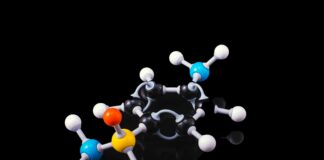Self-Healing Materials: Innovations in Restoration and Resilience
In the realm of material science and engineering, the concept of self-healing materials stands as a testament to human ingenuity. These remarkable materials possess the ability to repair damage autonomously, mimicking the regenerative capabilities observed in living organisms. As a groundbreaking innovation, self-healing materials hold the potential to revolutionize industries ranging from construction and aerospace to electronics and medicine. This article delves into the captivating world of self-healing materials, exploring their mechanisms, applications, and the unprecedented advancements they bring to various sectors.
Understanding Self-Healing Materials
At its core, the concept of self-healing materials is reminiscent of the remarkable ability of biological organisms to heal wounds and mend damaged tissues. However, in the realm of synthetic materials, the process is fundamentally different and typically relies on integrating smart mechanisms within the material’s structure. These mechanisms are designed to detect damage and subsequently initiate repair processes without requiring external intervention. The pursuit of self-healing materials is fueled by the desire to extend the lifespan of materials, reduce maintenance costs, and enhance overall safety and reliability.
The mechanisms underlying self-healing materials can be classified into intrinsic and extrinsic approaches. Intrinsic self-healing involves incorporating healing agents directly within the material matrix. These agents remain dormant until damage occurs, at which point they are triggered to flow into the cracks or voids, thereby restoring the material’s integrity. The encapsulation of healing agents within microcapsules, vascular networks, or hollow fibers is a common strategy employed to achieve intrinsic self-healing. On the other hand, extrinsic self-healing methods focus on embedding external components, such as fibers or particles, into the material. These components act as reinforcements that bridge the damaged areas, effectively healing the material.
The success of self-healing materials often hinges on the development of innovative triggers that initiate the healing processes. These triggers can be physical, chemical, or even biological in nature. For instance, temperature change, pH shift, or exposure to specific chemicals can stimulate the release of healing agents. Furthermore, the advancement of smart materials and technologies, such as shape-memory polymers and responsive hydrogels, has opened new avenues for designing materials that not only heal but also adapt to changing conditions.
Applications and Implications
The applications of self-healing materials span a diverse range of industries and sectors. In the realm of construction and infrastructure, where deterioration and structural damage are persistent challenges, self-healing materials offer a promising solution. Cracks that emerge in concrete structures, for example, could potentially be repaired autonomously, preventing the need for costly and disruptive manual interventions. In the aerospace industry, self-healing materials could enhance the durability and safety of aircraft components, ensuring that small defects do not compromise the overall integrity of the aircraft. Moreover, the field of electronics stands to benefit as well. Self-healing materials could lead to more robust and durable electronic devices, capable of repairing minor faults and extending their operational lifespan.
The medical field is another domain where self-healing materials hold transformative potential. Implantable medical devices, such as pacemakers or prosthetics, often encounter wear and tear over time. Self-healing materials could enable these devices to mend themselves, reducing the need for frequent replacements and invasive procedures. In addition, the development of self-healing biomaterials could revolutionize tissue engineering and regenerative medicine. By integrating self-healing properties into scaffolds or implants, researchers aim to create materials that not only provide mechanical support but also facilitate the natural healing processes of the body.
Beyond the immediate practical applications, self-healing materials also have significant implications for sustainability and resource conservation. The ability to extend the lifespan of materials reduces the demand for replacements, thereby curbing resource consumption and waste generation. This aligns with the principles of circular economy and contributes to the development of more environmentally friendly industries. Moreover, self-healing materials have the potential to enhance the safety and reliability of critical infrastructure, minimizing the risk of catastrophic failures and their associated societal and economic impacts.
Challenges and Future Directions
While the concept of self-healing materials holds immense promise, several challenges must be addressed to fully realize their potential. The development of effective and reliable healing mechanisms, as well as the integration of these mechanisms into various types of materials, remains a complex task. Ensuring compatibility between healing agents and the material matrix, as well as achieving optimal performance under varying environmental conditions, presents additional challenges. Furthermore, scalability and cost-effectiveness are crucial considerations for widespread adoption, as the production of self-healing materials may require specialized manufacturing processes.
Research efforts are also focused on understanding the long-term durability and stability of self-healing materials. Questions about the lifespan of healing agents, the impact of repeated healing cycles, and the potential for unintended consequences are areas of active investigation. Additionally, the ethical and regulatory aspects of self-healing materials in fields such as medicine and aerospace require careful deliberation to ensure their safe and responsible deployment.
Looking ahead, the future of self-healing materials holds exciting possibilities. As researchers continue to uncover new mechanisms and refine existing ones, the performance of these materials is likely to improve significantly. This progress will likely extend the range of potential applications and accelerate the integration of self-healing materials into commercial products. Collaborations between material scientists, engineers, and other interdisciplinary experts will play a vital role in advancing the field and addressing its challenges.
In conclusion, self-healing materials stand at the forefront of innovation, offering a glimpse into a future where materials possess the remarkable ability to repair themselves. From enhancing the durability of infrastructure to revolutionizing medical devices and contributing to sustainability, these materials hold the potential to reshape various industries. As research and development efforts continue, self-healing materials are poised to transform the way we conceive of and interact with the materials that shape our world.
The concept of self-healing materials has captured the imagination of scientists, engineers, and innovators across diverse fields. It represents a paradigm shift in material science, where the focus has shifted from passive, inert substances to dynamic and responsive materials capable of mending themselves. This new frontier brings with it a multitude of opportunities and challenges that have spurred intense research and development activities.
One of the most intriguing aspects of self-healing materials is the way they draw inspiration from nature. The regenerative abilities of living organisms, ranging from the seamless healing of wounds in human skin to the rapid recovery of plant tissues, have long been a source of fascination. Researchers have sought to mimic these biological processes by embedding similar healing mechanisms within synthetic materials. This endeavor has led to a fundamental shift in the way we perceive and interact with materials, blurring the lines between the inanimate and the animate.
The driving force behind self-healing materials is the quest for durability and longevity. Traditional materials, no matter how well-engineered, are subject to wear and tear, degradation, and the accumulation of damage over time. This inevitability has profound implications for industries ranging from infrastructure and transportation to consumer electronics. Self-healing materials offer a potential solution to these challenges by introducing a level of resilience that was previously unattainable. They enable materials to recover from small-scale damages, effectively extending their service life and reducing the need for frequent replacements.
The development of self-healing materials is a testament to the extraordinary fusion of material science and engineering. It requires a deep understanding of material properties, chemical interactions, and mechanical behavior. Designing materials that can autonomously detect and repair damage demands innovative thinking and multidisciplinary collaboration. Engineers and chemists work hand in hand to create healing mechanisms that are reliable, efficient, and compatible with the host material. This integration of diverse expertise underscores the complexity and richness of the self-healing materials field.
Beyond their technical intricacies, self-healing materials hold profound implications for sustainability. In a world grappling with resource depletion and environmental concerns, the ability to extend the lifespan of materials takes on heightened significance. Imagine a construction industry where concrete structures mend their own cracks, reducing the need for resource-intensive repairs and replacements. Consider electronics that become more reliable and longer-lasting, reducing electronic waste and conserving precious metals. These scenarios align with the principles of a circular economy, where materials are utilized more efficiently and waste is minimized.
However, the journey to realize the full potential of self-healing materials is not without hurdles. Researchers must grapple with the challenges of scalability and manufacturability. What works well in a laboratory setting might prove difficult to replicate on a large scale, with cost-effectiveness and consistency becoming critical factors. The integration of healing mechanisms without compromising the material’s mechanical properties requires a delicate balance that demands rigorous testing and optimization. Moreover, the intricate interplay between various factors such as temperature, humidity, and stress introduces complexity into the design process.
The medical field is one area where self-healing materials have sparked considerable interest. Implantable devices, prosthetics, and medical implants often face issues related to wear and tear, infection, and mechanical failure. By endowing these materials with self-healing properties, researchers envision a future where medical interventions are less invasive and more durable. The potential for self-repair in biomedical materials offers a glimpse of how technology can merge seamlessly with the human body, enhancing both patient outcomes and quality of life.
As the field of self-healing materials continues to evolve, it brings to light ethical and regulatory considerations. The introduction of autonomous repair mechanisms raises questions about control, safety, and unintended consequences. Ensuring that these materials function reliably and without posing risks to users is a paramount concern. Additionally, as self-healing materials find their way into diverse applications, there is a need for standardization and clear guidelines to govern their usage. Balancing innovation with responsibility remains a key challenge in the ongoing development and deployment of self-healing materials.
Looking ahead, the trajectory of self-healing materials is promising. As researchers delve deeper into the intricacies of material behavior and healing mechanisms, the performance of these materials is likely to improve. Novel approaches, such as combining self-healing properties with other functionalities like conductivity or flexibility, could unlock new realms of innovation. The evolution of self-healing materials might also contribute to a broader reimagining of material science, prompting us to explore the boundaries of what materials can achieve.
In conclusion, self-healing materials encapsulate a captivating blend of science, engineering, and inspiration from the natural world. Their emergence challenges traditional notions of materials as static and unchanging entities, ushering in a new era of resilience and adaptability. As we navigate the complexities of developing self-healing materials, we are not only pushing the boundaries of scientific understanding but also redefining our relationship with the materials that shape our lives.
The world of materials has always been a silent partner in human progress. From the earliest days of civilization, humans have been harnessing the potential of various materials to build shelter, create tools, and shape the environment around them. As societies evolved, so did our understanding of materials, leading to the development of alloys, polymers, and composites that have transformed industries and propelled innovation. However, even as materials have become more sophisticated and specialized, they have remained static in a fundamental way – once damaged, they would degrade or break, unable to mend themselves.
The emergence of self-healing materials disrupts this paradigm by introducing a dynamic quality that was previously reserved for the realm of living organisms. Imagine a car with a paint that can heal itself from scratches, a smartphone screen that repairs its own cracks, or a bridge that autonomously seals its own cracks to prevent corrosion. These scenarios, which might have seemed like science fiction not too long ago, are now within the realm of possibility thanks to the ingenuity of material scientists and engineers.
Self-healing materials challenge the traditional view of materials as passive entities with fixed properties. They infuse a sense of resilience, adaptability, and interactivity into the materials we use in our everyday lives. These materials possess the ability to sense changes in their environment, respond to stressors, and even initiate repair processes in the face of damage. This transformative shift from “materials that we use” to “materials that actively participate” has the potential to revolutionize a myriad of industries.
Consider the implications for transportation – a sector where safety and reliability are paramount. Self-healing materials have the potential to make vehicles more robust and durable. In the aerospace industry, for instance, aircraft components could be equipped with self-healing capabilities, reducing the risk of fatigue cracks or structural damage. This could lead to improved safety, reduced maintenance costs, and increased operational lifetimes for aircraft, all of which are critical factors in aviation.
In the realm of consumer electronics, self-healing materials could address one of the perennial issues faced by smartphone users: shattered screens. We’ve all experienced the sinking feeling of dropping our phones, only to find the screen cracked upon impact. Self-healing materials have the potential to turn this frustrating scenario into a thing of the past. Screens made from these materials could repair minor cracks over time, enhancing the durability of our devices and reducing the need for costly screen replacements.
The potential of self-healing materials isn’t limited to the visible world. It extends deep into the unseen realms of critical infrastructure. Imagine pipelines that can detect and repair leaks before they lead to environmental disasters, or dams that autonomously mend minor cracks to prevent catastrophic failures. In the world of energy production, self-healing materials could contribute to safer and more efficient nuclear reactors, enhancing the reliability of these complex systems that provide a significant portion of the world’s energy.
The medical field, with its ever-evolving landscape of implants, devices, and treatments, also stands to benefit from the emergence of self-healing materials. Prosthetics, for example, could become more comfortable and longer-lasting by incorporating self-healing properties. The constant wear and tear experienced by these devices could be mitigated by materials that automatically repair themselves, reducing discomfort and the need for frequent replacements.
On a broader scale, the integration of self-healing materials aligns with broader sustainability goals. The prolonged lifespan of materials means fewer resources consumed, less waste generated, and a lighter environmental footprint. As the world grapples with issues such as climate change and resource scarcity, innovations like self-healing materials offer a glimmer of hope by pointing toward a more sustainable future.
However, as with any disruptive technology, self-healing materials bring their own set of challenges. The complexity of designing and manufacturing these materials, especially on a commercial scale, cannot be understated. Engineers must navigate the intricate dance between material properties, healing mechanisms, and compatibility with existing manufacturing processes. Ensuring that self-healing materials can withstand the test of time, environmental variations, and real-world stresses requires a thorough understanding of their behavior.
Moreover, the adoption of self-healing materials necessitates a paradigm shift in how we approach design, manufacturing, and maintenance. Traditional methods of repair and replacement will need to be reevaluated in the context of these materials’ capabilities. This shift extends beyond technical aspects and touches on societal attitudes and practices related to material consumption and disposability.
In conclusion, the advent of self-healing materials marks a pivotal moment in material science and engineering. These materials transcend the boundaries of traditional materials by introducing dynamic, responsive, and adaptive qualities that have the potential to reshape industries, enhance safety, and contribute to sustainability. As the journey to unlock their full potential continues, self-healing materials invite us to reimagine not only what materials can do, but also how we interact with them and the world around us.














